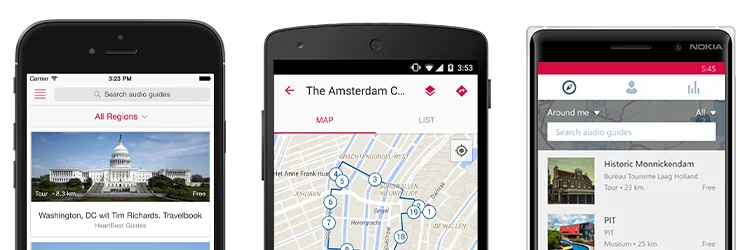Museum SUBTERRANEO
- Download the applinks
- iOS
- Android
- Windows Phone
Museumsinfo
Über das Museum
The mining Museums of Massa Marittima
During the 1970s, the mining activity that for centuries had marked the territory of the Metalliferous Hills of Tuscany went into a gradual decline that resulted, twenty years later, in the definitive closure of the mines themselves. A group of ex-miners and private citizens, working together in COMASAM (Committee of valorization of the mining patrimony of Massa Marittima), and in the Mineralogical Group, began to gather objects, work tools, maps, plans, and abandoned machinery, and they proposed to the city government the creation of a museum that would tell the story of a vanishing epoch. At a time when the mines were in crisis, but still operating, the city government with great foresight planned the installation of two museums: these are the Mining Museum, where for approximately 700 meters several galleries meander along, arranged like an actual mine, and the Museum of the Art and History of Mining, dedicated to the display of tools, cartography, and minerals: many of these items were donated by the miners themselves, and by other citizens who had used or collected them. The two mining museums are now united under the shared name of SUBTERRANEO.
The SUBTERRANEO Museum
The building that houses the Museum came into being as an elementary school in the 1930s, and ceased serving this function in the early 2000s. In 2022, the Museum of the Art and History of Mining, previously housed in the fifteenth-century Palace of Arms in the city’s historic centre, was transferred to this site. The idea for this move came from the COMASAM group and its tireless president Lido Santini: only after many years was it possible to accomplish this transfer, which has the merit of connecting even more closely the two mining Museums of Massa Marittima.
This Museum displays a rich testimony of equipment, tools, antique mining maps, charts with geological cross-sections, and samples of the minerals from the territory’s mines.
The visit continues in the nearby itinerary, located within a tunnel below the hill of Calcareous tufa (a carbonate deposit formed in cold waters) which overlooks the historic centre of Massa Marittima. A series of underground passages, some of them natural and others hewn in the Middle Ages in order to extract building stones, were also used during World War II as anti-air raid shelters. The visitor’s route was laid out by the ex-miners, who in these various galleries re-created their working environment: the storage area for the wood that was needed to equip the tunnels, the explosives depository, the supervisor’s stash, the mess hall, the shafts, the small stoves, the various systems of fitting out the mines, and the various methods of excavating and processing the minerals. Along the tunnels a variety of machines and devices are found: wagons for the transport of workers and materials, shovels, pneumatic hammers, and aeration tubing.
The Parco Nazionale delle Colline Metallifere
For many years, the two Museums of Massa Marittima remained the only examples of the valorization of the mining heritage of the Metalliferous Hills of Tuscany. In 2002 the Parco Nazionale delle Colline Metallifere - Tuscan Mining Geopark was created. The purposes of this park include the study, safe-keeping, and valorization of the rich heritage of knowledge, structures, technologies, and landscape left behind by an uninterrupted mining activity from Prehistoric times to the 1990s. After the birth of the Park, which belongs to the network of UNESCO geoparks, museums have been established in all the Municipalities of the territory, along with geo-mining itineraries. Emergencies related to mining have also been highlighted.
Subterraneo is one of the Gateways of the Park, in other words a point of access and ideal departure for a visit to the urban centre of Massa Marittima, and the entire territory of the Metalliferous Hills, with their landscapes, museums, and itineraries.
Audio-Touren
Ausstellungsstücke
Ausstellungsstücke mit Audioinformationen
-
Tragedia di Ribolla (1954)
-
Christmas inside the Niccioleta mine (1952)
-
Corrado Banchi
-
The Geological History of Southern Tuscany
-
What is a mineral deposit?
-
Geologists, Mining Engineers, and Naturalists in Tuscany
-
The mining of metals from Prehistory to the Roman Era
-
The mining of metals in the Middle Ages and Renaissance
-
The mining of metals in the Middle Ages and Renaissance
-
Miners and Silversmiths
-
The Mining Code
-
Bernardino Lotti and Gaetano Badii
-
New life for the mines of Massa Marittima
-
The mine
-
The productive process
-
The Mining School of Massa Marittima
-
Historic Mining Cartography
-
Modern methods and tools for mining work
-
Modern methods and tools for mining work
-
The profession of miner
-
And the women?
-
The Struggles of the Miners’ Unions
-
The mining village of Niccioleta
-
The demise of mining activities in the Massa Marittima area during the 20th century
-
CHALCOPYRITE
-
PYRITE
-
GALENA
-
SPHALERITE
-
TETRAHEDRITE
-
QUARTZ
-
CALCITE
-
GYPSUM AND ANHYDRITE
-
Credits
Bewertungen
Kostenlose izi.TRAVEL-App herunterladen
Erstellen Sie Ihre eigenen Audio-Touren!
Die Verwendung des Systems und der mobilen Stadtführer-App ist kostenlos.



